How to not die in a tree well
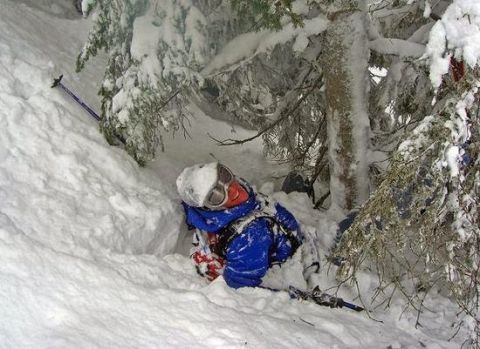
Tree Well and Snow Immersion Suffocation (SIS)
A tree well/ snow immersion suffocation accident can happen when a skier or snowboarder falls – usually headfirst – into a tree well or deep loose snow and becomes immobilized and trapped under the snow and suffocates.
In an inverted position you can become trapped under the snow. Breathing becomes difficult as the loose snow packs in around you. Without immediate help from your partner, you may suffocate.
Prevention of falling into a tree well or areas of deep snow is all-important because the odds of surviving deep snow immersion are low.
90% of people involved in Tree Well/ SIS hazard research experiments could NOT rescue themselves. If a partner is not there for immediate rescue, the skier or rider may die very quickly from suffocation – in many cases, he or she can die as quickly as someone can drown in water.
2. What is a Tree Well?
A tree well is a void or depression that forms around the base of a tree can and contain a mix of low hanging branches, loose snow and air. Evergreen trees in particular (fir, hemlock, etc) can have large, deep tree wells that form when low hanging branches block snow from filling in and consolidating around the base of the tree. These voids can be hidden from view by the tree’s low hanging branches.
There is no easy way to identify if a particular tree has a dangerous tree well by sight therefore, treat all tree wells as dangerous.
In simple terms, a tree well is a hole or void in the deep snow, which is clearly marked by a tree. You can easily identify and avoid these areas.
The picture from the site of a fatal Tree Well/ SIS accident demonstrates that even very small trees with just their tops visible can be lethal.
3. Where do Accidents Happen?
- Most all Tree Well/ SIS accidents happen in ungroomed terrain. A groomed run is a ski or snowboard run that has been driven on by a snow machine to compact and consolidate the snow.
- Most Tree Well/ SIS accidents happen where there are combinations of deep powder and trees and where lots of powder skiers and snowboarders are seeking powder snow.
- Lots of deep loose snow makes for the best powder skiing conditions. Unfortunately these conditions also significantly increase the chance of a Tree Well/ SIS accident.
- 70% of all Tree Well/ SIS accidents involve tree wells. Deep snow Tree Well/ SIS accidents occur in areas of deep snow, deep snow pockets or terrain that concentrates deep snow such as steep drops, and creek beds.
- The risk of a Tree Well/ SIS accident is greatly reduced just by staying on groomed runs.
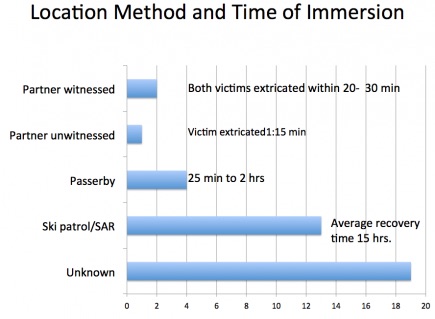
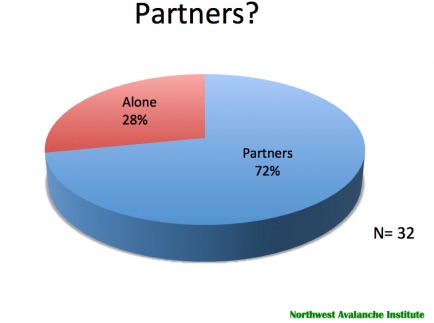
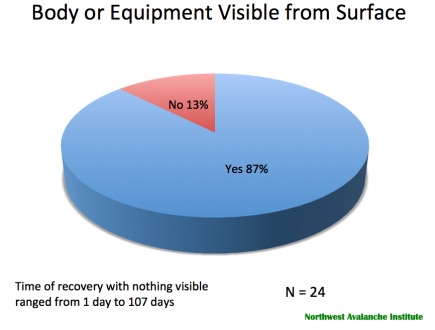
4. When do Accidents Happen?
Most Tree Well/ SIS accidents have happened during or just after big snow storms or storm cycles. In general terms, the more fresh snow the higher the risk.
As of 2011 research, an average of four Tree Well/ SIS accidents happen each season in the United States.

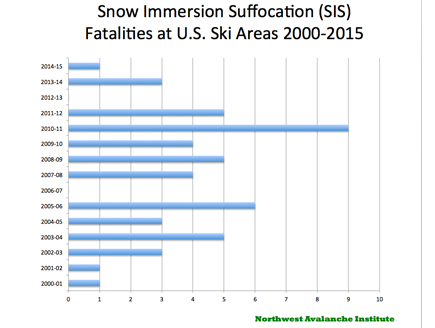
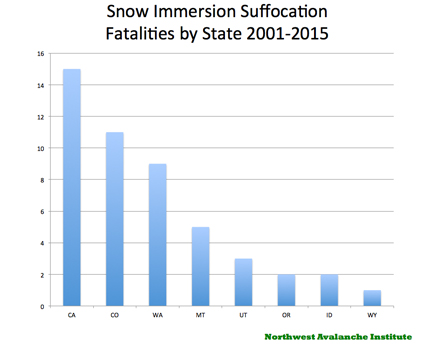
5. What if you go down?
Yell or use whistle to get your partners attention.
Do whatever you can to keep your head above the surface of the snow including rolling, grabbing tree branches or the tree trunk. If possible, keep your feet below level of your head.
If you become immersed, make a space around your face and protect your airway – resist the urge to struggle, it could compromise your airspace and entrap you further.
Stay calm to conserve air.
Trust your partner is on their way.
If possible, use your cell phone to call ski patrol or the resort's emergency number.
6. Keep your partner in sight at all times! What if your partner goes down.
More than half of all SIS victims were with partners that did not see them go down. Lose sight of your partner and you could lose your friend.
If you lose contact with your partner, assume they need help. Many SIS victims have died while their partners were waiting at the bottom of a lift.
TIP: In dense tree areas or in poor visibility, ski or ride short pitches and stop to regroup often – stay within sight of your partner!
- Don’t leave to get help – Stay with your partner!
- Call for additional resources. Use a whistle or yell for assistance. If possible, call ski patrol or the resort's emergency phone number.
- Evaluate scene safety for yourself.
- IMMEDIATELY begin snow immersion rescue efforts.
- Go directly for the airway, and keep it clear, be careful not to knock more snow into the hole. Clear any snow from the airway and continue necessary first aid or extrication efforts
- Do not try to pull victim out the way they fell in. Instead, determine where the head is and tunnel in from the side. When tunnelling directly for the airway be careful not to knock more snow into the hole.Continue expanding the tunnel to the airway until you can extricate the body. Efficient “strategic shovelling techniques”with multiple rescuers is very useful.
7. What to do if you did not witness your partner going down but suspect they may have:
- Immediately call resort emergency number and report point last seen.
- If you can not get back to the area where you suspect your partner may be in a timely manner, go to closest lift terminal and notify patrol of your location and stay there until contacted by patrol as what to do next.
- If you do NOT have a cell phone, contact nearest guest with one to call resort emergency number.
- If phone service is not available and you are unable to return to your partner to help in a timely manner, proceed to nearest location to contact ski patrol or resort personnel – remember these accidents are "time critical."
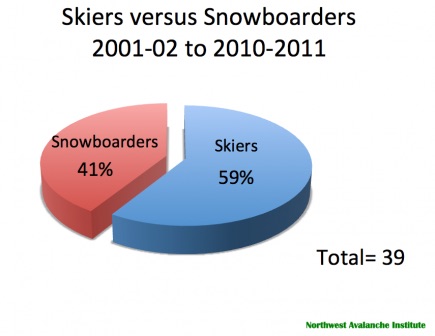
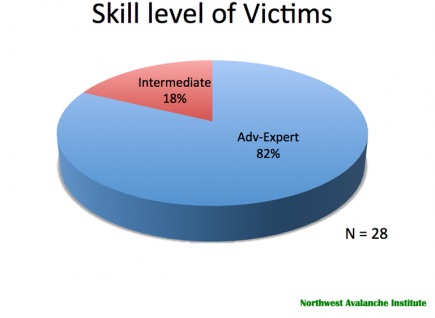
Article from http://www.deepsnowsafety.org








